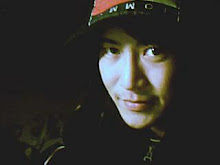在連續量測的過程中,科學家總是得想盡辦法不干涉量子態(quantum states)的連貫性;而近來以色列和德國的科學家展開合作打破了以上的規則。他們打算透過對量子態的量測來控制熱力學(thermodynamics,即溫度)和熱力學函數──熵(entropy)。
科學家們聲稱,在一個二能級量子系統(two-level quantum systems)中──就像那些用於描述量子位元(q-bits)的系統──可透過對量子系統的量測頻率來控制溫度和熵;並因此可望實現新一代的冷卻方案,以快速沉降(instant-settling)原子、分子和固態元件。
這些來自以色列魏茲曼科學研究所(Weizmann Institute)和德國波茨坦大學(Potsdam University)的科學家們聲稱,控制熱力學和熵的常數,是用於量測其量子態的頻率。透過採用這種方式可以在更短時間內實現冷卻和量子態淨化(purification),速度較透過控制迴路(control loop)實現熱平衡、冷卻或回饋要快很多。
與德國波茨坦大學的研究員Mathias Nest共同展開研究的魏茲曼科學研究所教授Gershon Kurizki、博士後研究員Noam Erez和博士候選人Goren Gordon表示,進行量子量測是侵入性的,典型的量測不會干擾被量測中的系統,但若某個量子系統正進行某項特定量測,則該系統與其他特定系統的耦合(coupling),會暫時受到此量測的影響。
這些科學家表示,量子力學的特性可用以做為一種新的晶片級冷卻和量子運算方法。工程師們通常根據冷卻晶片所需散熱器(heat sink)的尺寸來計算熱量損失。而研究人員稱,超快速的量測會加速或延緩熱效應,因而使之與散熱器的尺寸無關。透過調節光學溫度量測的速率,研究人員發現溫度本身也是可以被調節的。
研究人員稱,採用連續量測還可以改變系統熵或下降時間(relaxation time)──即下降到最低能量態的所需時間。透過調整系統熵,未來的量子電腦可更快地達到中間結果(intermediate results)的沉降,各個運算之間的復原(resetting)時間也將加速。
(參考原文:Measuring quantum states could yield new chip-cooling scheme)
(R. Colin Johnson)
-----------------------------------------
原文
Measuring quantum states could yield new chip-cooling scheme
R. Colin JohnsonEE Times (06/03/2008 10:03 H EDT)
PORTLAND, Ore. — Scientists take great pains not to disturb the coherence of quantum states through constant measurements. Israeli and German scientists recently collaborated to turn this technique on its head, using the measurement of quantum states to control thermodynamics (temperature) and entropy (settling).
The scientists claim that in two-level quantum systems--like those used to represent quantum bits (q-bits)--the frequency used to measure them controls both temperature and entropy. The approach could enable novel cooling schemes as well as instant-settling for atomic, molecular and solid-state devices.
The scientists at the Weizmann Institute (Rehovot, Israel) and Potsdam University in Germany claim that the constant that controls thermodynamics and entropy is the frequency used to measure their quantum states. Both cooling and state purification, they claim, can be made to occur much more quickly than the normal time typically needed to achieve thermal equilibrium, cooling or feedback around a control loop.
Quantum measurements are intrusive, according to professor Gershon Kurizki, postdoctoral fellow Noam Erez and doctoral candidate Goren Gordon at the Wiesmann Institute. They worked in cooperation with researcher Mathias Nest at Potsdam University.
Classical measurements do not interfere with the system being measured. When a specific measurement is made in a quantum system, however, the coupling to other specific systems is temporarily interrupted by the measurement.
This odd characteristic of quantum mechanics can be harnessed, according to these scientists, as a new method of chip-scale cooling and quantum computing. Engineers usually measure heat loss in terms of the size of the heat sink needed to cool a chip. But the researchers claim that ultra-fast measurements can speed up or slow down thermal effects independent of the size of the heat sink.
By adjusting the rate at which optical temperature measurements were made, the researchers found that the temperature itself could be adjusted.
Taking frequent measurements also changed the system entropy or relaxation time--the time needed to reach the lowest energy state. By adjusting system entropy, future quantum computers could tilt toward faster settling of intermediate results and faster resetting between calculations, the researchers said.
skip to main |
skip to sidebar

Dr. Nakamure, 2006 Millenniun Technology Prize Awarded to UCSB's Shuji Nakamura

The weblog introduces global optronics and PV industries, relative technologies. We hope our collections will be useful infomations to the world.
My Idol-從LED巨人Nichia面前打贏官司(並且贏得天價賠償金)的傳說中的男人

Dr. Nakamure, 2006 Millenniun Technology Prize Awarded to UCSB's Shuji Nakamura
Walt

Everything that man made is big now was once small
網誌存檔
-
►
2009
(1)
- ► 01/04 - 01/11 (1)
-
▼
2008
(59)
- ► 09/28 - 10/05 (1)
- ► 08/24 - 08/31 (2)
- ► 08/03 - 08/10 (1)
- ► 07/27 - 08/03 (4)
- ► 07/20 - 07/27 (1)
- ► 07/13 - 07/20 (1)
- ► 07/06 - 07/13 (1)
- ► 06/15 - 06/22 (1)
- ► 05/25 - 06/01 (2)
- ► 05/18 - 05/25 (1)
- ► 05/11 - 05/18 (2)
- ► 05/04 - 05/11 (1)
- ► 04/27 - 05/04 (2)
- ► 04/20 - 04/27 (1)
- ► 04/13 - 04/20 (2)
- ► 04/06 - 04/13 (1)
- ► 03/30 - 04/06 (4)
- ► 03/23 - 03/30 (2)
- ► 03/09 - 03/16 (2)
- ► 03/02 - 03/09 (1)
- ► 02/24 - 03/02 (1)
- ► 02/10 - 02/17 (6)
- ► 02/03 - 02/10 (3)
- ► 01/27 - 02/03 (5)
- ► 01/20 - 01/27 (1)
- ► 01/13 - 01/20 (4)
- ► 01/06 - 01/13 (3)
-
►
2007
(37)
- ► 12/30 - 01/06 (4)
- ► 12/23 - 12/30 (7)
- ► 12/16 - 12/23 (6)
- ► 12/02 - 12/09 (1)
- ► 11/25 - 12/02 (3)
- ► 11/18 - 11/25 (2)
- ► 11/11 - 11/18 (1)
- ► 11/04 - 11/11 (13)
Words from "A tale of two cities"
It was the best of times, it was the worst of times,
it was the age of wisdom, it was the age of foolishness,
it was the epoch of belief, it was the epoch of incredulity,
it was the season of Light, it was the season of Darkness,
it was the spring of hope, it was the winter of despair,
we had everything before us, we had nothing before us,
we were all going direct to Heaven, we were all going direct the other way- in short,
the period was so far like the present period, that some of its noisiest authorities insisted on its being received, for good or for evil, in the superlative degree of comparison only.
it was the age of wisdom, it was the age of foolishness,
it was the epoch of belief, it was the epoch of incredulity,
it was the season of Light, it was the season of Darkness,
it was the spring of hope, it was the winter of despair,
we had everything before us, we had nothing before us,
we were all going direct to Heaven, we were all going direct the other way- in short,
the period was so far like the present period, that some of its noisiest authorities insisted on its being received, for good or for evil, in the superlative degree of comparison only.

1 則留言:
酷斃了。
張貼留言